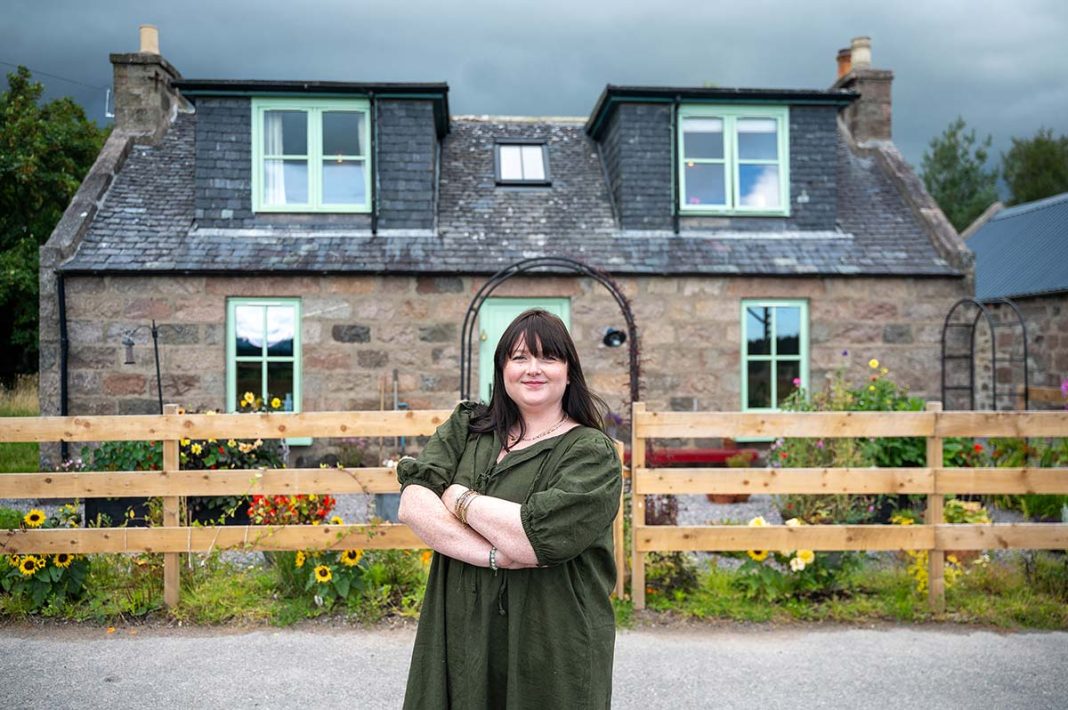The much-anticipated new season of Scotland’s Home of the Year saw Rachel Doughterty’s home, Quiney Cottage in Banchory, win full marks in episode one
It’s official, interior lovers; Scotland’s Home of the Year is back for 2024, with a brand new series launching last night, Monday 29th April.
Monday’s episode on BBC One Scotland took a look at three homeowners across the North East of Scotland, focusing on a modern self-build near Inverurie, a cottage in Banchory and a listed farmhouse in South Aberdeenshire.
Judges Anna Campbell-Jones, Banjo Beale and Danny Campbell were impressed by facets of all three properties, but it was Rachel Dougherty’s 1860s cottage – Quiney Cottage – with its parade of pattern and colour that truly stole the show, with a full 30 marks from all three judges, securing her a place in the final.
Below, we discuss the renovation process, her ‘shock’ win, her design inspirations and what it’s like to be featured on Scotland’s biggest homes show…
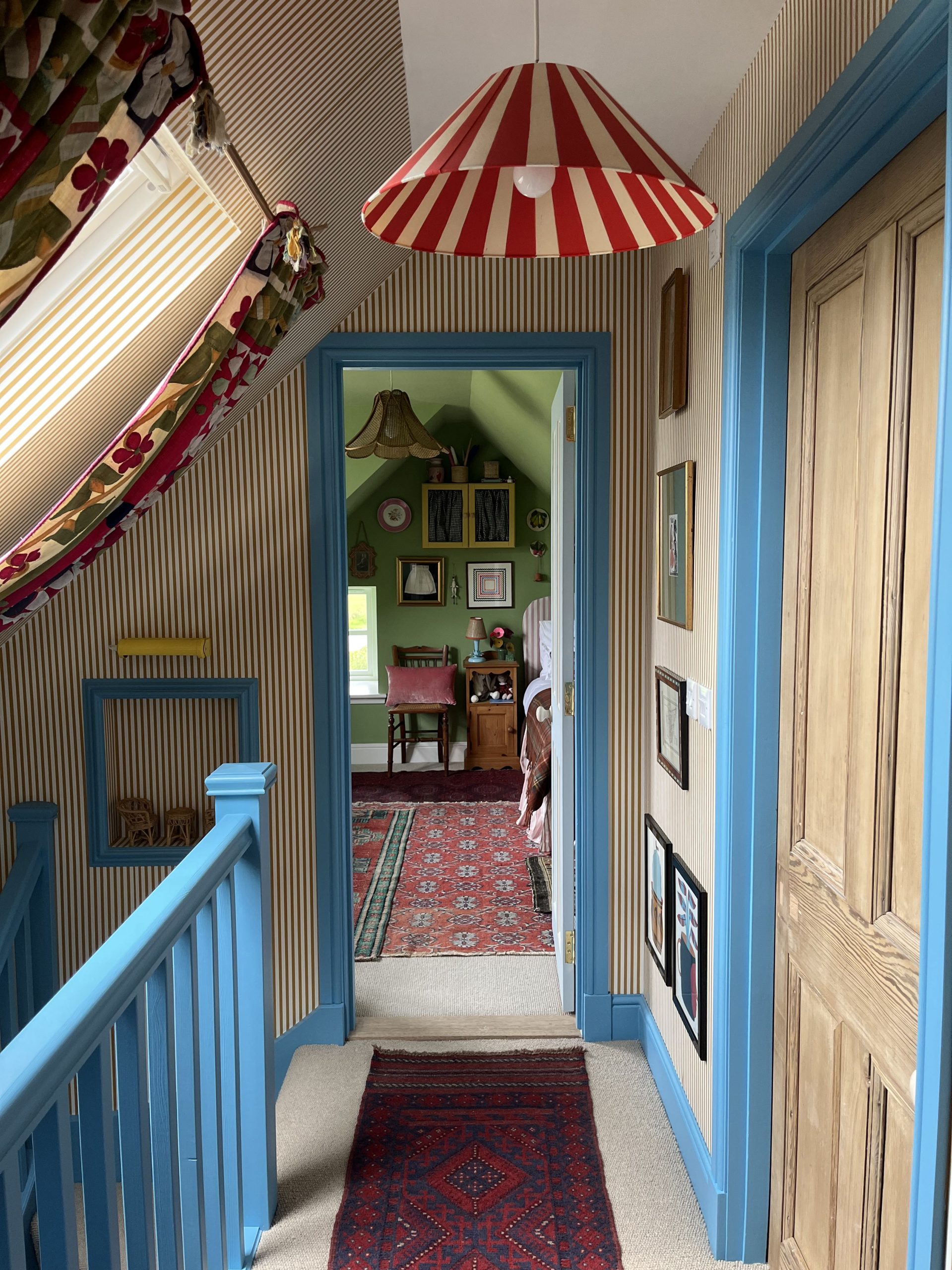
On curating a creative playground
Danny described your place as “Einstein meets Warhol with haggis bonbons thrown in”. How you would describe Quiney Cottage in your own words?
I don’t think I can be as creative as Danny, that’s for sure. I know what he’s getting at when he says haggis bonbons, but the design hasn’t been done in a cliche, Scottish tartan way. There’s definitely elements of fun and playfulness. “Cute and cosy”, would be another way I’d describe it.
The fun and playfulness is evident right from when you see Quiney Cottage – the windows and front door are painted in a beautiful sage/mint green.
That shade was the front runner because I really liked how the mint sat against the granite – I knew that I wanted to have something that wasn’t traditional, like white.
And locally, a dark green is traditionally used to decorate doors and windows as it’s the estate colour. So the green I went with is a nod to the cottage’s heritage, but with my own stamp on it.
On the renovation process
You have the most gorgeous view from your work space on the upper level. Did you plan the layout around spaces that you’d dreamed about, or was the layout mainly dictated by the skeleton of the cottage?
I really wanted to keep the layout as traditional as possible. The kitchen has now been split in half to be a shower room and utility, kind of like wash kitchen. But overall, I wanted to keep the rooms and the layout as kind to the original as possible.
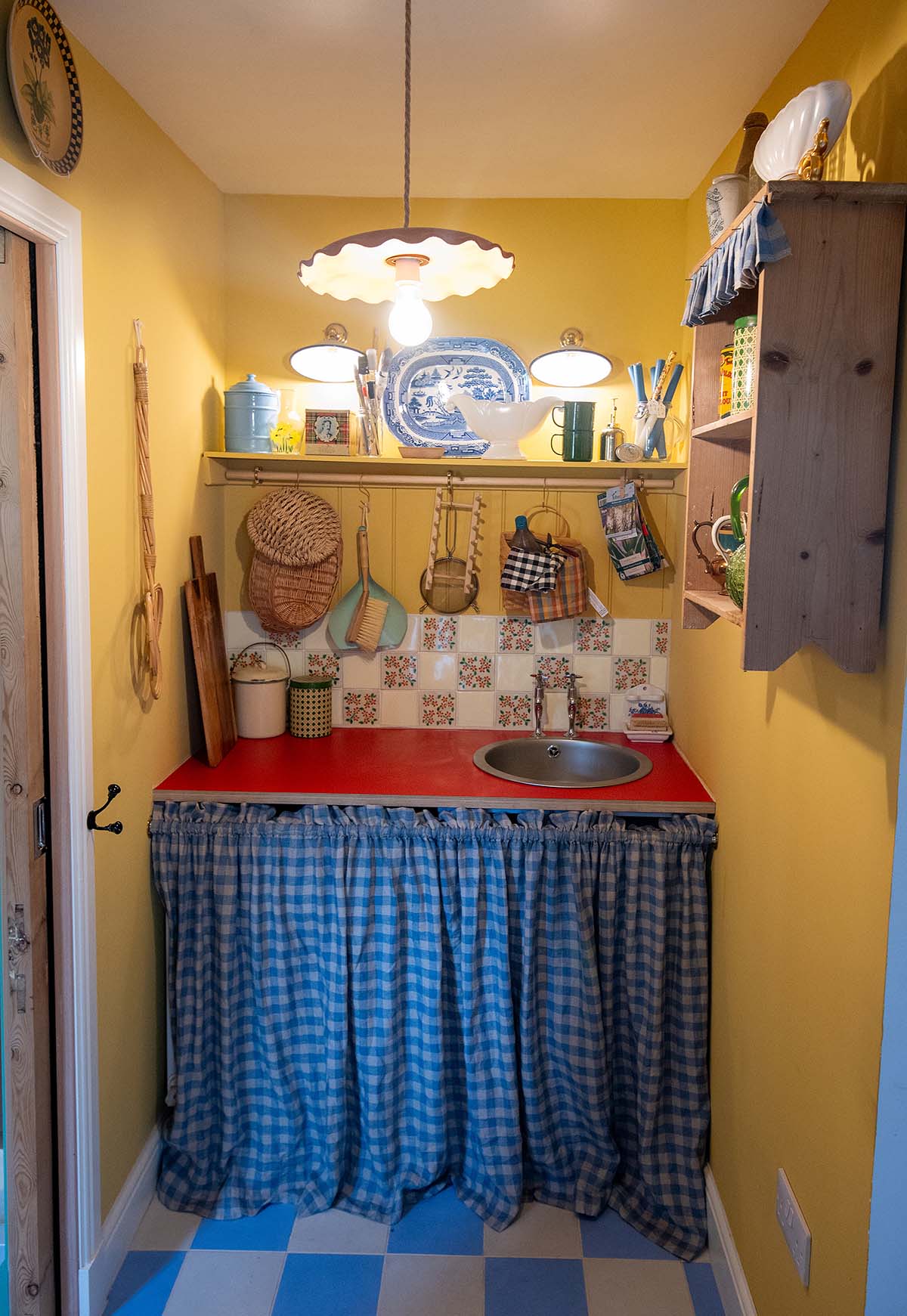
In the episode, we see images of the renovation process where walls had been taken down and there was no flooring. How daunting was that for you and how long did the renovation take?
I started it in the beginning of 2021 and then while I was waiting for things to happen with building plans, I was ripping things out during the weekends and evenings – just grabbing time wherever I could to work on the house. I was living and working in the cottage, so I’d just use whatever time I had available.
Work started officially the following year, in 2022. I used Sangster & Company joinery contracting services and Catriona Tanner at TINTO Architecture who finished the renovation over five to six months. After that, I moved onto the decorating and everything was finished up by the end of 2022.
On her passion for sustainability
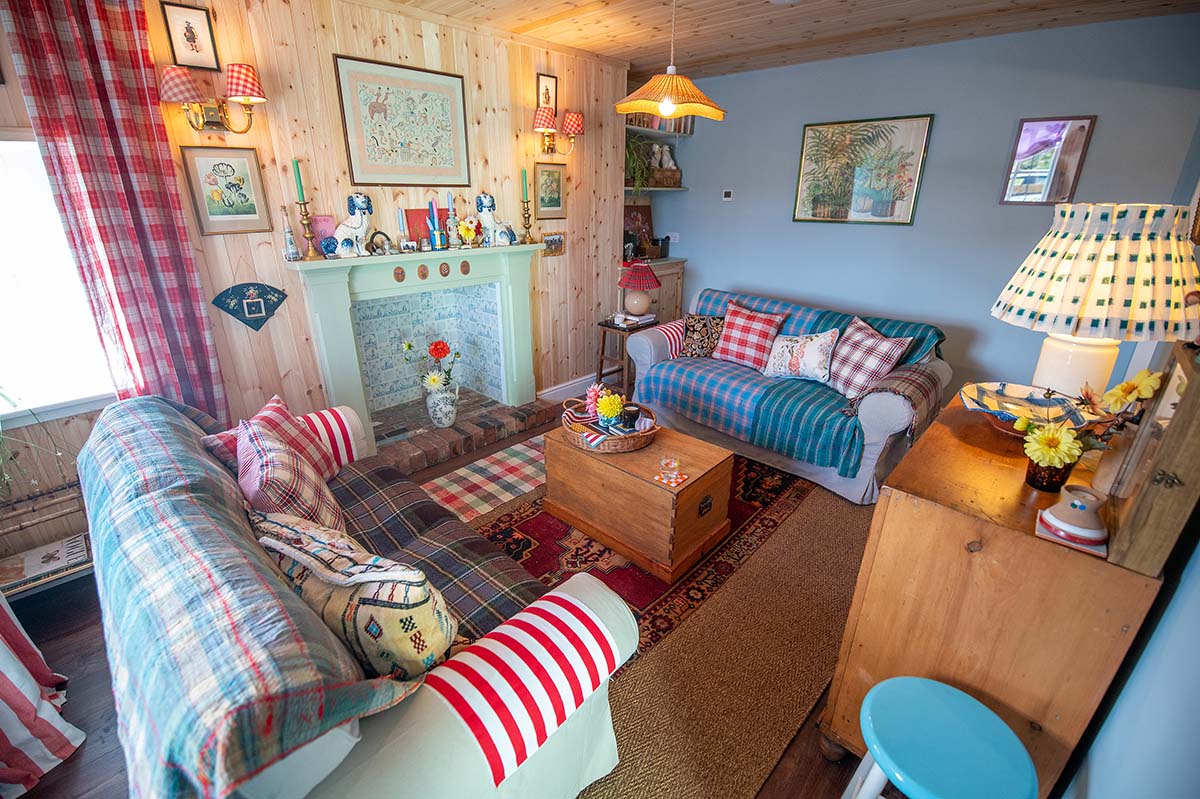
One of the main things that jumps out when watching the episode is how considered your artwork and furniture choices are – many are secondhand and upcycled. Was shopping sustainably the plan from the outset?
Yes – sustainability is quite important to me. Not only because it’s more affordable, but also because there’s so many well-built, amazing things that can be given a second home. Plus, it’s another way to add some instant character into your home, using well-made furniture from a different time.
Did you use any specific vintage or secondhand shops around Scotland that you’d be happy to share?
Oh, yeah, definitely. There’s a really good antiques shop called Deeside Antiques Emporium in Kincardine O’Neil where I picked up some pieces.
On putting her skills to the test
You mentioned in the episode that you studied textiles. Did that skill set inform your approach to the design in terms of the colours and the patterns that you wanted to use?
I’m a handbag designer and I specialised in textiles at university, so I guess my whole approach to things is doing my research and building mood boards together and trying to tackle a room at a time and but also, I guess, be inspired by the things I find, and collect pieces as I go.
When you do a job like mine, you naturally seem to become interested in interiors. I’m always looking in magazines or on Pinterest and Instagram and being inspired by by people’s homes. It feels like a natural sidestep to to the research that I do daily for my job.
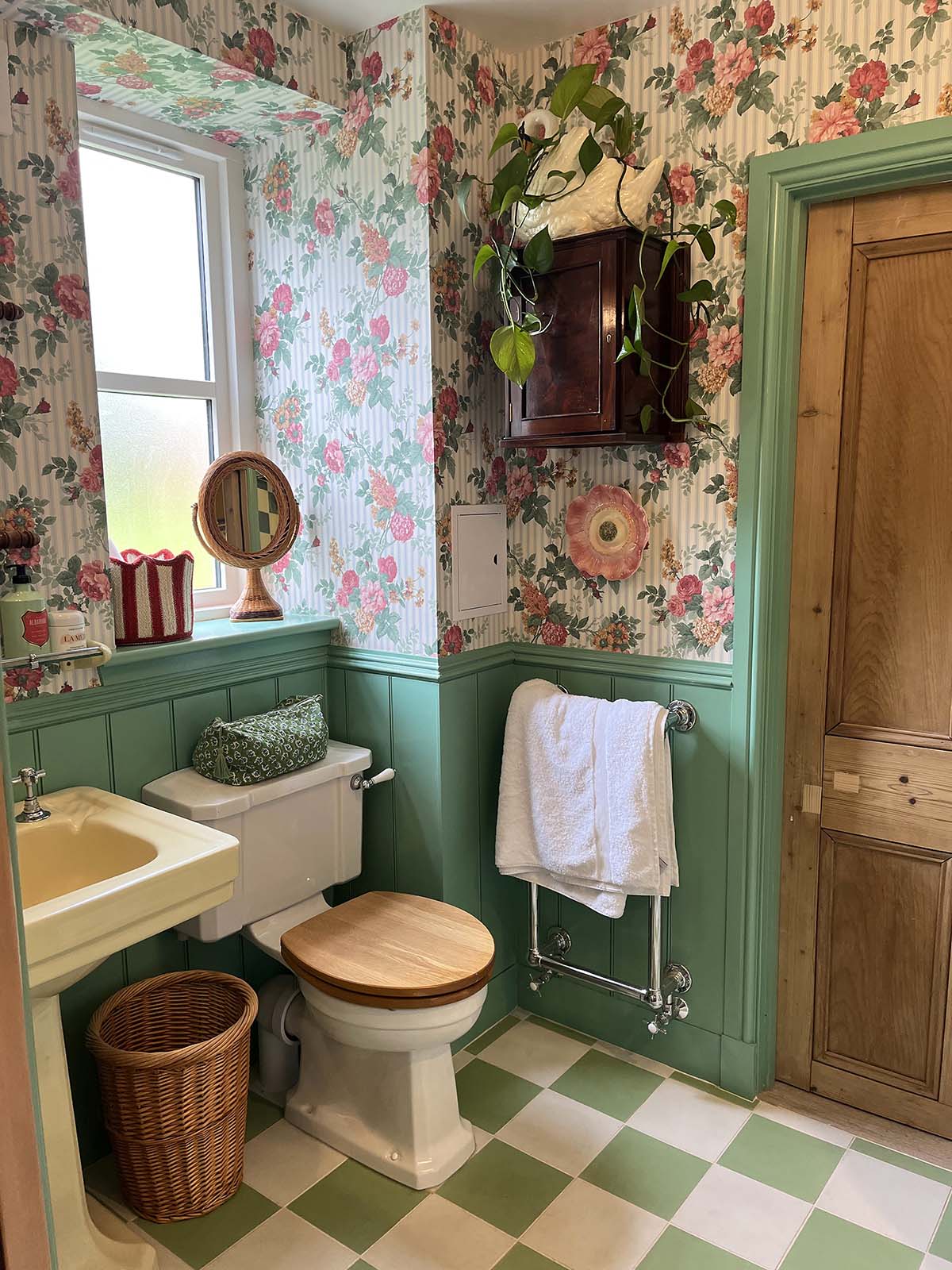
One of the evident themes in the cottage is pattern – there’s a lot of maximalist styles there, mixing checkerboard with florals and stripes with tartans. What’s your ethos when it comes to mixing prints and not being afraid of using texture?
I seem to be drawn to checks, tartans, stripes and florals and I feel like they can go together and do go together, as long as there’s a common thread with the colour pulled through from one of the patterns. I think you can definitely play around with clashing prints.
How did it feel to win your episode of Scotland’s Home of the Year and head through to the final?
It was a crazy feeling! I was a little bit shocked – it was just all quite surreal, really, but it was so lovely to know that the judges picked the cottage, especially after all the hard work and all the love that I poured into it.
And to know that I’m doing this for me and it’s my home, but to know that other people feel a certain way about your home is really lovely and it makes me feel proud. It just makes me look back at everything that I’ve done and kind of stop and think, ‘Yeah, all the hard work was worth it!’.
For updates on Quiney Cottage, follow Rachel on her Instagram @quineandlooncottage
Watch the full episode on BBC iPlayer below
Scotland’s Home of the Year 2024: An exclusive chat with judge Danny Campbell


